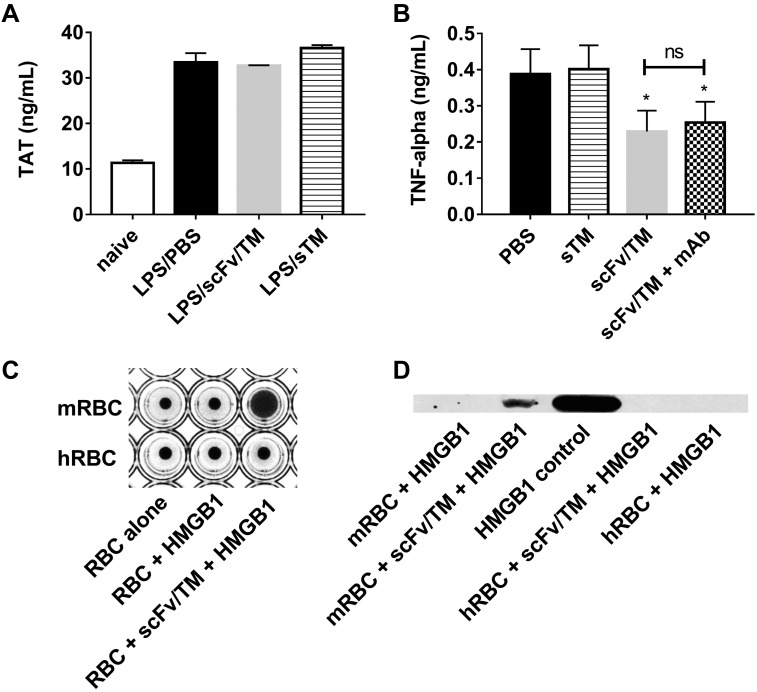Figure 4.
RBC-targeted scFv/TM suppresses LPS induced inflammation independent of anticoagulant activity. A) Levels of TAT were measured by ELISA in plasma from mice treated with PBS, sTM (90 nmol/kg), or scFv/TM (90 nmol/kg) 3 h after LPS challenge. Plasma was assayed at 6 h after LPS challenge. The results demonstrate no significant decrease in TAT for either therapeutic. B) The extent of inflammatory suppression by scFv/TM or sTM (18 nmol/kg) administered 3 h before LPS challenge was assessed by measuring plasma TNF-α by ELISA in the presence and absence of mAb 1591, which blocks the anticoagulant, but not cytoprotective, activity of APC. The results demonstrate that scFv/TM maintains its protective effect in the presence of mAb 1591. C) The ability of RBC-bound scFv/TM to sequester the inflammatory mediator HMGB-1 was assayed by hemaggultination techniques wherein mouse RBCs (that bind Ter119 scFv/TM) and human RBCs (as a nonbinding control) were coincubated with HMGB-1 followed by antibody against HMGB-1 to induce agglutination if HMGB-1 is bound to the RBC surface. The formation of an RBC carpet across the bottom of the well indicates positive agglutination, and a central button of RBCs indicates a negative result. D) Murine RBCs coated with scFv/TM captured HMGB1 in vitro as measured by Western blotting technique. Recombinant HMGB-1 is shown as a positive control; naive murine RBCs, naive human RBCs, and human RBCs treated with scFv/TM (which does not bind Ter119) are shown as negative controls. *P < 0.05 vs. LPS/PBS control (1-tailed t test).

